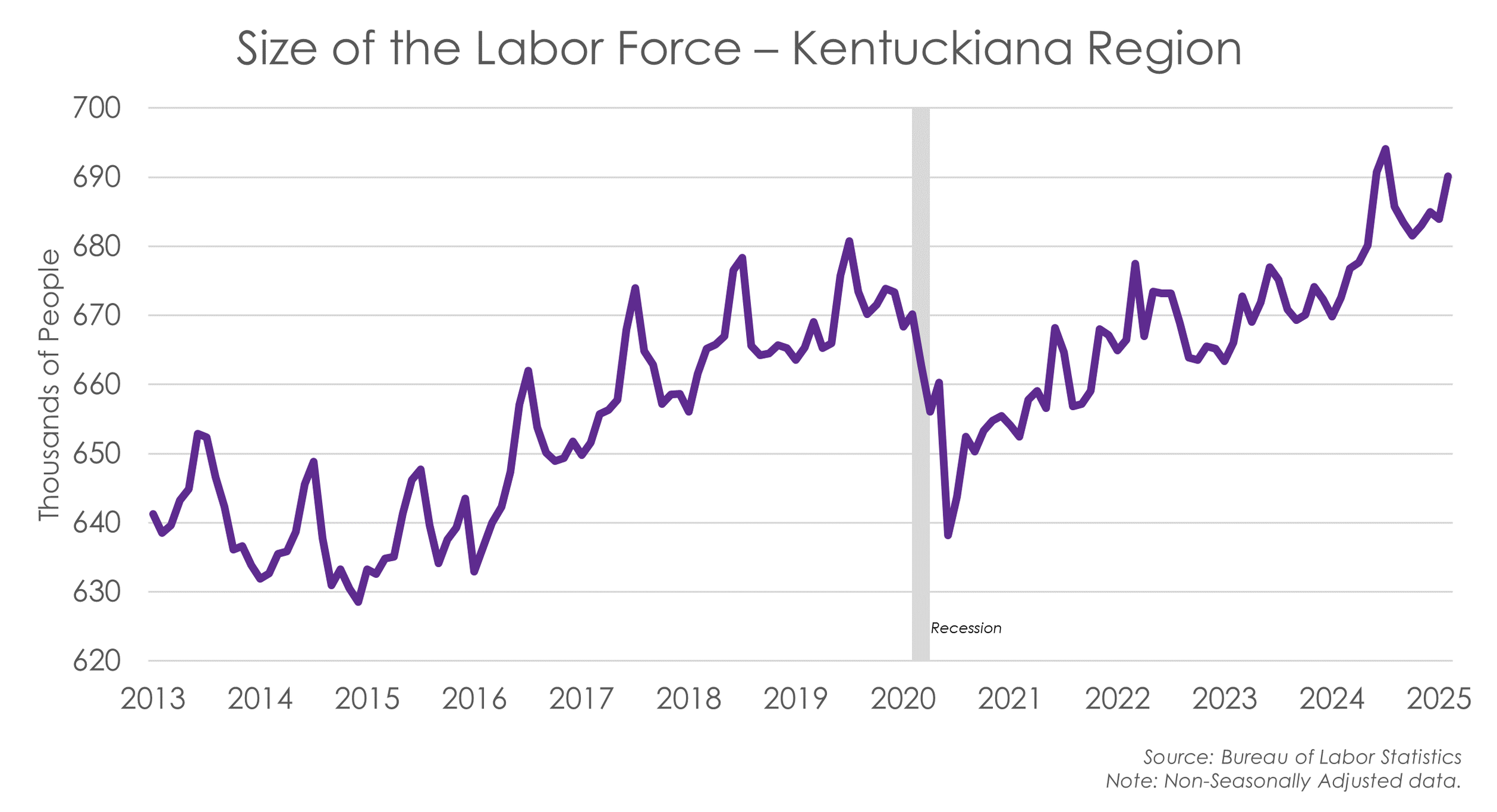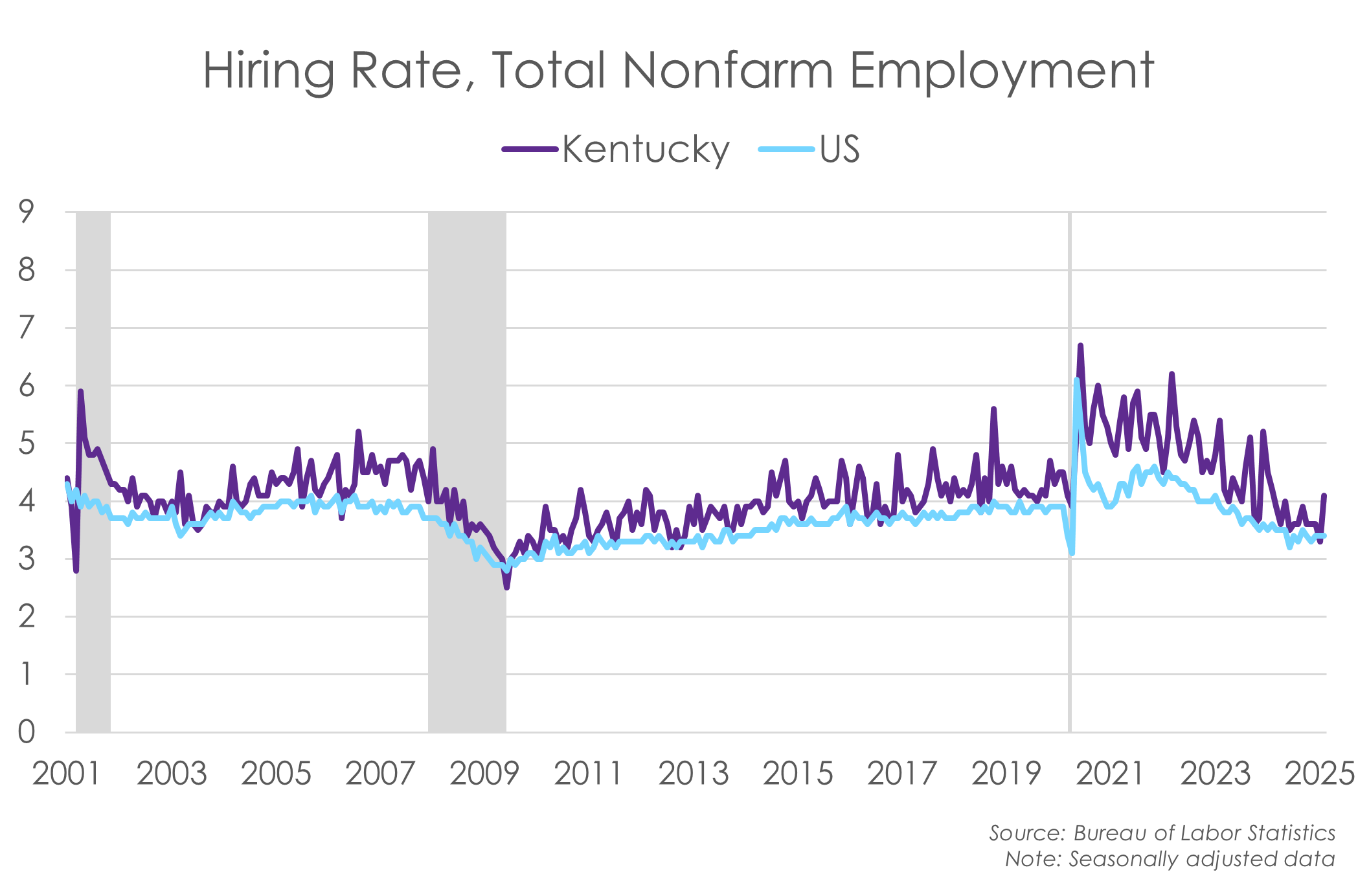Louisville Region’s Labor Market: 2024 Highlights
The regional economy showed signs of softening in 2024. Higher interest rates set by the Federal Reserve achieved their intended purpose of slowing the economy to reduce inflation. The economy entered the current turbulent policy environment from an already weakened position. It has been especially difficult for people entering the labor market, particularly young workers. Let’s review the highlights from 2024.
The unemployment rate remained fairly low in 2024, but was higher than the previous two years.
The region’s unemployment rate averaged 4.5% in 2024. While this represents a low unemployment rate by historic standards, it is 0.7 percent point higher than the unemployment rate in 2023 and 0.9 point higher than 2022. Our region’s unemployment rate also tracked above the nation’s in 2024, averaging 0.5 point higher.
Definition review - Unemployment rate
The unemployment rate measures the percentage of the people in the labor force who are out-of-work. When the unemployment rate is low, it signifies that people who are looking for work are likely to be employed.
The Kentuckiana region includes thirteen Kentucky and Indiana counties, including Jefferson County (Louisville). Learn more about how we define our region here.
The labor force saw strong growth in 2024, finally exceeding the level seen before the pandemic.
The size of the region’s labor force averaged nearly 682,000 people in 2024, a 1.6% increase from the level in 2023 and 2% increase from 2022. The number of people working or actively looking for work in the region grew by more than 11,000 people compared to its 2019 level.
Definition review - Labor force
The size of the labor force accounts for the pool of potential workers in the region. It includes people who are working as well as people who are out-of-work, but are actively seeking work over the last month. It counts individuals just one time, even if they have multiple jobs. It counts people who report working, even if that employment is self-employment or contract-based work. It does not count people who have not actively looked for work over the last four weeks, including those who are retired, in school, and taking care of family.
There were more people employed in 2024 than in previous years.
The number of Kentuckiana residents reporting they were employed increased to more than 650,000 people in 2024. Compared to the 2020 low, there were more than 39,000 additional people working in 2024. It was also a 0.8% increase over 2023. However, because the size of the labor force grew faster than the number of employed workers, the unemployment rate ticked up.
Definition review - Employed workers
Employed workers account for all of the people who are working in a given month. It counts individuals just one time, even if they have multiple jobs. It counts people who report working, even if that employment is self-employment or contract-based work. Employed persons make up part of the labor force.
Demand for workers was down in 2024
The volume of online job postings in the region fell by more than a quarter since peaking in 2022. Hiring across Kentucky’s employers fell to levels last seen in 2013 (when unemployment was 7.2%).
New entrants to the labor market face a challenging job market.
The increase in the unemployment rate was driven by a growing labor force, rather than layoffs. People entering or reentering the labor force have been met with fewer options to connect to employment. Research from the Burning Glass Institute shows how this has disproportionately affected young workers, under age 25. The pattern holds for young adults with and without a college degree.






